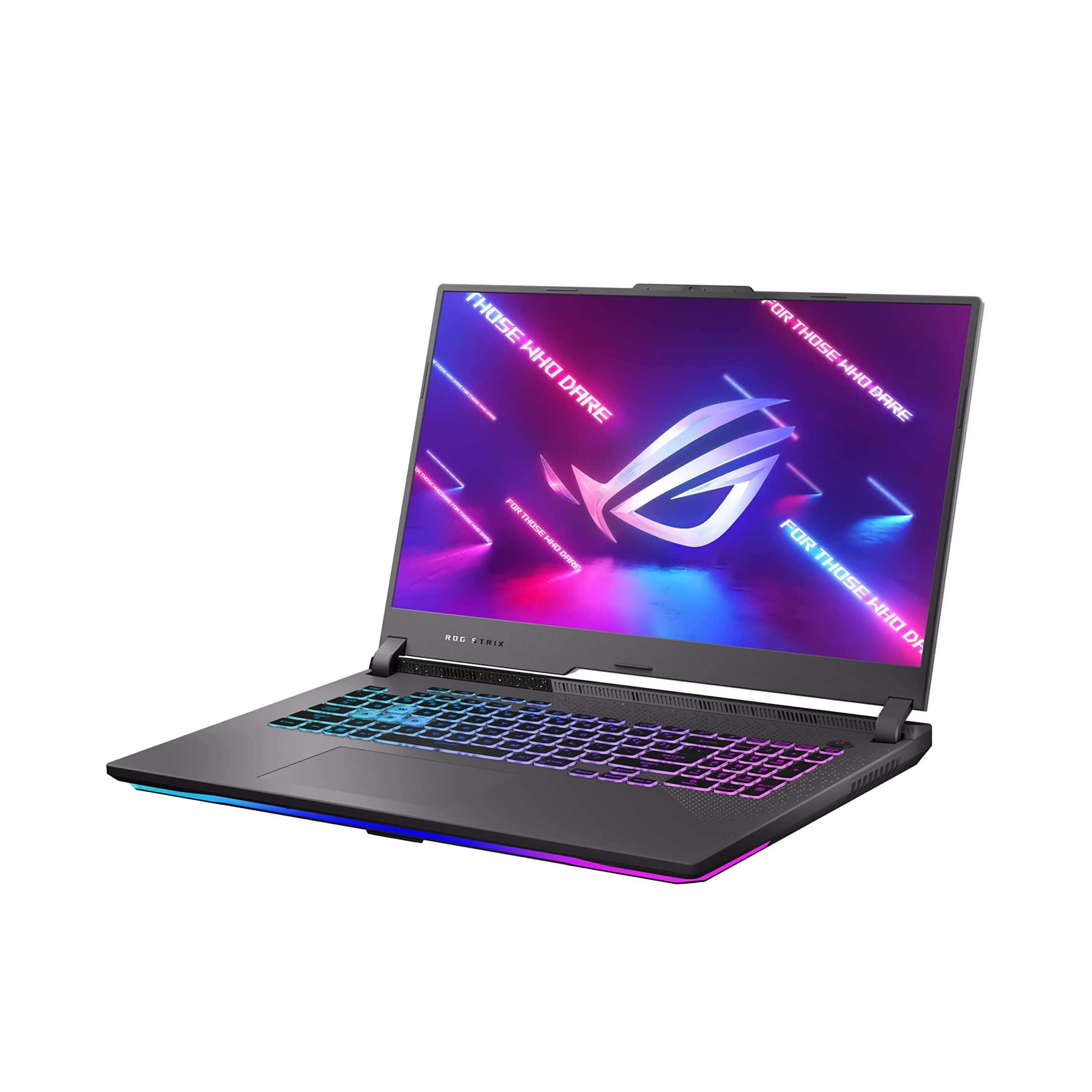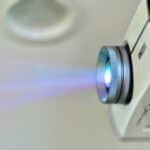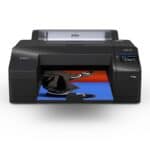Is your Asus laptop plugged in but not charging? This common problem can be frustrating when you need your laptop ready to go. Many Asus laptop users face battery charging issues at some point, ranging from batteries stuck at 0% to those that won’t charge at all. The solution often involves a combination of simple troubleshooting steps like power cycling your device, checking your power cable connections, and updating or reinstalling battery drivers.
Battery charging problems usually have straightforward fixes you can try before seeking professional help. One quick fix is to shut down your laptop completely, disconnect the power cable, and hold the power button for at least 60 seconds. This process resets the power management system and often resolves charging issues. Another approach is to check Device Manager to ensure your battery drivers are functioning properly.
Sometimes the problem isn’t with the battery itself but with related components. Your charging port could be damaged, the power adapter might be faulty, or there could be software issues preventing proper battery management. Checking these elements one by one helps identify the specific cause of your charging problem.
Asus Laptop Battery Won’t Charge: Troubleshooting Guide
If your Asus laptop battery isn’t charging, it could be caused by anything from a loose connection to a software glitch or a failing battery. Here’s a complete troubleshooting guide to help you identify and fix the problem.
1. Check the Basics First
- Secure the Connection: Make sure the power adapter is plugged into both the wall and your laptop securely.
- Inspect the Power Cord and Adapter: Look for visible signs of damage like fraying, bent tips, or a burnt smell.
- Try a Different Outlet: Faulty wall outlets can cause charging issues.
- Use the Original Charger: Third-party chargers may not deliver the proper voltage or current.
2. Restart Your Laptop
- Shut down the laptop completely.
- Unplug the charger and remove any peripherals.
- Wait 30 seconds, plug the charger back in, and boot the system.
Sometimes this resets charging sensors or resolves stuck power settings.
3. Perform a Battery Reset (Power Cycle)
- Turn off the laptop.
- Unplug the power adapter.
- For models with a removable battery: take out the battery.
- Press and hold the power button for 30 seconds.
- Reinsert the battery (if removable), plug in the charger, and turn it on.
This can help clear residual power and reset the charging circuitry.
4. Check Battery Status in Windows
- Go to Settings > System > Power & Battery (or Control Panel > Power Options on older versions).
- If it says “Plugged in, not charging,” Windows is detecting the charger but preventing charging due to software or battery health limits.
5. Update or Reinstall Battery Drivers
- Press
Win + Xand choose Device Manager. - Expand Batteries.
- Right-click on both:
- Microsoft AC Adapter
- Microsoft ACPI-Compliant Control Method Battery
- Select Uninstall device for both.
- Restart your laptop—Windows will reinstall the drivers automatically.
6. Update BIOS and Power Management Software
Outdated BIOS or firmware can cause battery recognition issues.
- Visit the official Asus support page and enter your laptop model.
- Download and install the latest BIOS update and Asus Power Management utilities.
- Follow Asus’s update instructions carefully.
Caution: A BIOS update should only be done if you’re comfortable with it, as improper installation can harm your system.
7. Run Asus Battery Health Charging Utility (if available)
Some Asus laptops come with a utility that manages how the battery charges to extend lifespan.
- Open Asus Battery Health Charging software.
- If it’s set to “Maximum Lifespan Mode,” the battery won’t charge past 60–80%.
- Switch to “Full Capacity Mode” to allow a full charge.
8. Try a Different Charger
If possible, test with a known working Asus-compatible charger. A faulty adapter or charger tip can often be the cause.
9. Check for Windows or Firmware Conflicts
- Roll back any recent Windows updates if the issue started afterward.
- Check if charging works in the BIOS menu. If the battery charges while in BIOS, it could point to an OS-related problem.
10. Battery May Be at End of Life
Batteries degrade over time. If your laptop is a few years old, the battery might not hold a charge or might have failed entirely.
- Use tools like Battery Report:
- Open Command Prompt as administrator.
- Type:
powercfg /batteryreport - Check the report in
C:\Users\[Your Name]\battery-report.htmlto see battery health.
Look for “Design Capacity” vs. “Full Charge Capacity”. If the latter is far lower, your battery may need replacement.
Final Tip
If none of the above steps work, you may need to replace either the battery or the power adapter. If your Asus laptop is still under warranty, contact Asus Support for service options.
Let me know if you’d like help checking your battery report or finding a replacement battery model.
Key Takeaways
- Power cycling your laptop by holding the power button for 60 seconds can reset the battery system and fix many charging problems.
- Check and reinstall battery drivers through Device Manager as software issues often prevent proper charging.
- Inspect physical components like the power adapter and charging port for damage that might be causing charging failures.
Understanding Asus Laptop Battery Basics
Battery problems with Asus laptops often stem from misunderstanding how laptop batteries work. Knowing the basic components and charging process can help you identify and fix charging issues more easily.
Components of a Laptop Battery
Most Asus laptops use lithium-ion battery packs. These packs contain several cells working together to power your device. Each battery has a controller chip that manages power flow and protects against overcharging or overheating.
The battery connector is another crucial component. It creates the physical link between your battery and laptop. When this connector gets dirty or damaged, charging problems can occur.
Battery cells have a limited lifespan. They typically last 300-500 complete charge cycles before their capacity starts to decline. This is why older laptops often show “plugged in, not charging” messages.
The ACPI (Advanced Configuration and Power Interface) system controls how your laptop manages power. This software interface works with your hardware to regulate charging.
Typical Charging Process
When you plug in your Asus laptop, power flows from the outlet through the AC adapter to your computer. The charging circuit first checks if the power source provides the correct voltage.
Next, the laptop’s power management system evaluates the battery’s current charge level. This system uses the Microsoft ACPI-Compliant Control Method Battery to monitor and control charging.
The charging process has three main phases: bulk charging (0-80%), absorption (80-95%), and trickle charging (95-100%). This explains why batteries charge quickly at first, then slow down.
Your laptop’s BIOS also plays a key role in managing the charging process. Sometimes, outdated BIOS versions can cause charging problems that require updates to fix.
Troubleshooting Steps for Charging Issues
When your ASUS laptop battery won’t charge, there are several systematic approaches you can take to identify and fix the problem. These methods range from checking physical components to using software diagnostics.
Verifying the Power Adapter and AC Adapter
First, check if your power adapter is working properly. Look for any visible damage to the cable, especially near the ends where fraying commonly occurs. The adapter’s LED light should be on when plugged into a working outlet.
Try a different wall outlet to rule out power supply problems. Sometimes outlets can fail without tripping breakers.
Test the adapter’s output voltage with a multimeter if available. The voltage should match what’s printed on the adapter (typically 19-20V for most ASUS laptops).
If possible, borrow a compatible power adapter from another ASUS laptop to determine if yours is faulty. Many charging issues stem from damaged adapters rather than internal laptop problems.
Check the charging port on your laptop for debris or damage. Bent pins or accumulated dust can prevent proper connections.
Inspection of the Battery and Connections
For laptops with removable batteries, power down completely and remove the battery. Look for any bulging, leaking, or other physical damage that indicates battery failure.
Clean the battery contacts with a soft, dry cloth. Dirt or oxidation can prevent proper electrical connection.
Reseat the battery firmly to ensure good contact. Some users report success with the “power drain” method: remove the battery, hold the power button for 60 seconds, then reconnect everything.
For non-removable batteries, check if the bottom of your laptop feels unusually hot during charging attempts. Excessive heat may indicate battery issues.
Inspect the connection between your laptop and charger. The plug should fit snugly without wobbling.
Running the Battery Troubleshooter
Windows includes built-in troubleshooting tools that can help diagnose battery problems. Access this by going to Settings > Update & Security > Troubleshoot > Power.
Right-click on the battery icon in your taskbar and select “Power Options” to check your power plan settings. Sometimes incorrect power settings can affect charging.
Check Device Manager by right-clicking the Start menu and selecting “Device Manager.” Expand the “Batteries” section and look for any warning symbols.
If you see issues with the “Microsoft ACPI-Compliant Control Method Battery” entry, right-click it and select “Uninstall device.” Then restart your laptop to reinstall the drivers automatically.
Update your BIOS from the ASUS support website, as outdated firmware can sometimes cause charging problems.
Using HWMonitor to Check Battery Health
Download and install HWMonitor, a free tool that provides detailed information about your laptop’s components, including battery status.
After launching HWMonitor, locate your battery in the list of components. Check the “wear level” percentage—anything above 30% wear may indicate a battery needing replacement.
Monitor the current charge capacity compared to the designed capacity. If your battery is only charging to 70% of its original capacity, it’s showing signs of age.
Check the discharge rate when your laptop is unplugged. A battery that loses charge rapidly even with minimal usage suggests deterioration.
Compare the voltage readings to manufacturer specifications. Consistently low voltage readings during charging attempts may indicate a faulty charging circuit rather than a battery issue.
Software-Related Fixes
Software issues often cause charging problems on Asus laptops. Before replacing hardware components, try these software solutions that can fix battery charging problems without opening your laptop.
Checking Battery Icon and Status
Start by checking your battery icon in the taskbar. Right-click on it and select “Power Options” to see if your battery is recognized. Sometimes the icon shows “plugged in, not charging” or “0% available” even when connected to power.
Open Command Prompt as administrator and type “powercfg /batteryreport” to generate a battery health report. This report saves to your user folder and shows battery capacity and charging history.
Check if Battery Saver mode is accidentally turned on. Click on the battery icon and make sure Battery Saver is off when plugged in.
Restart your laptop while connected to power. This simple step refreshes the connection between Windows and the battery controller.
Updating BIOS and Device Drivers
Outdated BIOS often causes battery charging issues. Visit the official Asus support website to download the latest BIOS version for your specific laptop model.
To update your BIOS:
- Go to support.asus.com
- Enter your laptop’s model number
- Download the latest BIOS file
- Follow the installation instructions carefully
Update power management drivers through Windows Update. Press Win+I to open Settings, select “Update & Security,” and check for updates.
Check for Asus-specific software updates like MyASUS or ASUS Battery Health Charging. These programs control charging behavior and might need updates.
Utilizing the Device Manager
Device Manager offers several ways to fix battery issues:
- Press Win+X and select “Device Manager”
- Expand the “Batteries” section
- Right-click on “Microsoft ACPI-Compliant Control Method Battery”
- Select “Uninstall device”
- Restart your laptop
This process forces Windows to reinstall the battery drivers automatically. After restart, the system will detect your battery as a new device.
Another option is to update the drivers directly. Right-click the battery drivers and select “Update driver.” Choose “Search automatically for updated driver software.”
Check for yellow warning symbols next to any power-related devices that indicate driver problems.
Running Power Troubleshooter in Windows
Windows has a built-in troubleshooter specifically for power issues:
- Open Settings (Win+I)
- Type “troubleshoot” in the search box
- Select “Troubleshoot settings”
- Click “Additional troubleshooters”
- Select “Power” and click “Run the troubleshooter”
Follow the on-screen instructions. The troubleshooter can automatically detect and fix common power management issues.
Try creating a new power plan. Go to Control Panel > Power Options > Create a power plan. Sometimes default power plans become corrupted.
Check your power settings for any custom configurations that might limit charging. Some power plans have maximum battery charge limits to extend battery life.
Assessing Power Issues
When your Asus laptop won’t charge, it’s important to check both the laptop itself and its power components. Finding the root cause helps you fix the problem without unnecessary repairs or replacements.
When the Laptop Won’t Turn On
If your Asus laptop won’t turn on at all, the battery might be completely drained or there could be a deeper issue. Try disconnecting the battery, holding down the power button for 30 seconds, and then reconnecting it. This process releases any trapped electrical charge.
Check if your laptop works when connected to the charger without the battery. If it starts up, your battery might be the problem.
Some users find success with a power reset. Remove the battery and AC adapter, press the power button for 15 seconds, then reconnect everything and try again.
Look at the power indicator lights. If they light up when plugged in but the laptop still won’t start, the motherboard might be receiving power but not distributing it properly.
Checking for Physical Hardware Damage
Examine your power cord and adapter carefully. Look for frayed wires, bent connector pins, or damage to the charging port on the laptop. Even small damage can prevent proper charging.
Check both ends of the charging cable for signs of burning or melting. A damaged cable can be dangerous and won’t deliver consistent power.
Make sure the wall outlet works by testing it with another device. Sometimes the issue isn’t with the laptop at all.
Try wiggling the connector gently while it’s plugged into the laptop. If the charging indicator flickers, the charging port might be loose or damaged.
If you have access to another compatible charger, test it with your laptop. This can help determine if the problem is with your charger or laptop.
Advanced Solutions and Considerations
When basic troubleshooting doesn’t resolve battery charging issues on your ASUS laptop, more complex solutions may be necessary. These approaches require deeper technical knowledge but can often fix persistent battery problems.
Resetting the Laptop’s Power Systems
A complete power reset can resolve many charging issues that regular troubleshooting misses. Start by shutting down your laptop completely. Remove the AC adapter and battery (if removable). Hold the power button for 30-40 seconds to discharge any remaining power in the capacitors.
For laptops with non-removable batteries, hold the power button for 60 seconds after shutdown. This forces a power drain from the system.
Some ASUS models have a pinhole reset button on the bottom. Use a paperclip to press this button for 10 seconds while the laptop is off. This resets the BIOS and power management systems.
After the reset, reconnect the AC adapter only (no battery) and try powering on. If successful, shut down and reinstall the battery.
Seeking Professional Repair Services
When all self-help methods fail, professional repair becomes necessary. ASUS offers warranty service if your laptop is still covered. Check your warranty status on the ASUS website using your serial number.
Contact ASUS support directly through their website or phone line. Describe all troubleshooting steps you’ve already tried to expedite the process.
For out-of-warranty laptops, consider authorized repair centers. They have specialized tools to diagnose battery issues and access to genuine replacement parts.
Before sending your laptop for repair, back up all important data. Battery issues can sometimes indicate motherboard problems that might require more extensive repairs.
Ask the repair service about battery replacement costs and if third-party batteries are an option for older models. Getting a cost estimate before proceeding will help you decide if repair is worthwhile.
Maintaining Your Asus Laptop Battery
Taking care of your Asus laptop battery helps it last longer and work better. Good maintenance can prevent many charging problems before they start.
Keep your laptop at a moderate temperature. Batteries don’t like extreme heat or cold. Try not to use your laptop on soft surfaces like beds or couches that block air vents.
Calibrate your battery regularly. This means letting it drain completely and then charging it to 100% without interruption. Do this once every 1-2 months to help your battery gauge stay accurate.
When storing your laptop for more than a week, keep the battery at about 50% charge. This prevents stress on the battery cells.
Clean the charging port gently with compressed air. Dust and debris can block proper connections between your charger and laptop.
Avoid these battery-draining habits:
- Running too many programs at once
- Setting screen brightness too high
- Keeping unnecessary peripherals plugged in
- Using demanding programs when on battery power
Check your power settings in Windows. Set up a balanced power plan that extends battery life without sacrificing performance.
Update your BIOS and drivers regularly. Asus sometimes releases updates that improve battery management and fix charging issues.
Consider using Battery Health Charging in MyASUS app. This feature lets you limit charging to 80% to extend overall battery lifespan.
Replace your battery if it’s more than 2-3 years old and causing problems. Even well-maintained batteries eventually wear out.
Understanding Related Electronics and Computing Concepts
Knowledge of basic electronics and computer hardware principles can help troubleshoot charging issues with your Asus laptop. These concepts explain why batteries fail and how power systems work in modern devices.
Relevance of Computer Hardware Knowledge
Understanding laptop components helps identify battery charging problems. The charging system involves several parts working together:
- Battery: Stores electrical energy through chemical reactions
- Charging circuit: Controls power flow to the battery
- Power adapter: Converts AC wall power to DC that your laptop can use
Many charging issues stem from faulty connections between these components. For example, if the DC jack on your laptop is loose, power won’t reach the battery properly. Similarly, damage to the motherboard’s charging circuit can prevent proper power management.
Knowing how to access basic hardware diagnostics can help too. Most Asus laptops have built-in battery health checkers in BIOS settings. These tools show if your battery holds less charge than when new.
Impact of Electronics on Laptop Functionality
Electronic components in laptops work as an integrated system, making diagnosis complex. When one part fails, others may compensate or malfunction.
Power management chips control how electricity flows through your Asus laptop. These tiny components determine charging rates and battery protection. When they fail, your laptop might show “plugged in, not charging” errors.
Firmware plays a key role too. This software layer sits between hardware and your operating system. Outdated firmware can cause charging problems even when all physical components work perfectly. This explains why driver updates sometimes fix charging issues.
Heat affects electronic performance significantly. Overheating can damage charging circuits or cause temporary failures. This is why some laptops charge normally when cool but stop charging during heavy use.
How To Stay Informed on Asus Updates
Staying updated with the latest Asus information can help you solve battery issues before they become problems. These updates often include fixes for common issues like charging problems.
Subscribing to Asus Email Notifications
Getting updates directly from Asus is easy and free. Visit the Asus website and look for the “Subscribe” or “Newsletter” option at the bottom of the homepage. Enter your email address and select what kind of updates you want to receive.
Asus sends emails about new drivers, BIOS updates, and software that can fix battery problems. These emails also include step-by-step instructions for installation.
You can customize what emails you get. For example, you might only want updates for your specific laptop model. This prevents your inbox from getting cluttered with irrelevant information.
The company typically sends 1-2 emails per month, so you won’t be overwhelmed with messages.
Exploring the Latest in Asus Laptop Technology
The Asus website has a dedicated support section for each laptop model. This area contains the most recent drivers and BIOS updates that might fix charging issues.
Where to look:
- Support section on Asus.com
- MyAsus app (pre-installed on most Asus laptops)
- Asus official forums
The MyAsus app is particularly useful. It can scan your system and recommend specific updates for your laptop. It also notifies you when a new BIOS update is available.
BIOS updates are critical for battery management. Microsoft and Asus work together on compatibility, so Windows Update sometimes delivers Asus-specific fixes too.
Follow Asus on social media platforms like Twitter and Facebook. They often announce major updates there before sending email notifications.
Asus Laptop Battery: Additional Resources
Finding the right help for your Asus laptop battery issues can save you time and money. These resources offer solutions from both community experts and official sources.
Online Forums and Technical Communities
The Asus ROG Forums provide dedicated spaces where users share battery troubleshooting tips specific to Republic of Gamers laptops. Many users post detailed fixes for the “0% available (plugged in) not charging” problem.
Reddit’s r/ASUS and r/techsupport communities have active members who often respond quickly with practical advice. Many users have posted step-by-step solutions after fixing similar issues themselves.
Microsoft Community forums contain numerous threads about Asus battery problems, including how to use Windows’ built-in power troubleshooter. This tool can identify system-level issues affecting your battery.
NotebookReview forums feature technical discussions where experts analyze battery circuit problems and suggest both software tweaks and hardware solutions.
Professional Guides and Tutorials
Asus Support Center offers official troubleshooting guides for battery issues. Their documentation includes model-specific instructions that cover BIOS updates that may resolve charging problems.
iFixit provides detailed repair guides with photos showing how to safely replace Asus laptop batteries. Their guides include required tools and difficulty ratings for each model.
YouTube channels like “Laptop Repair Guide” show visual walkthroughs of common fixes. These videos demonstrate how to reset battery controllers and check charging circuits with simple tools.
Microsoft’s official support pages explain how Windows power management features interact with laptop batteries. Their guides help isolate whether the problem is hardware or software-related.
Frequently Asked Questions
Here are answers to common questions about ASUS laptop battery charging problems. These solutions address various charging issues from simple fixes to more complex troubleshooting methods.
What steps can I take to troubleshoot an ASUS laptop that is plugged in but not charging?
First, check the power adapter and cable for any damage. Loose connections or frayed wires often cause charging problems.
Next, try a power reset. Disconnect all devices and the power cable from your laptop. If possible, remove the battery. Hold the power button for 30 seconds, then reconnect everything and try again.
Check Device Manager by right-clicking the Start menu and selecting “Device Manager.” Expand the “Batteries” section and right-click on “Microsoft ACPI-Compliant Control Method Battery.” Select “Uninstall device” and restart your computer to reinstall the drivers automatically.
How can I determine if my ASUS laptop battery needs replacement?
Check your battery health using the MyASUS app or ASUS Battery Health Charging utility. These tools show your battery’s current capacity and health status.
A significant decrease in battery life is a clear sign of battery degradation. If your laptop previously ran for hours but now lasts only minutes when unplugged, the battery likely needs replacement.
Windows provides battery reports. Open Command Prompt as administrator and type “powercfg /batteryreport” to generate a detailed report about your battery’s condition.
What should I do if my ASUS laptop shows no charging light when connected to a power source?
Try a different wall outlet to rule out power supply issues. Sometimes the problem is as simple as a faulty wall socket.
Test with another compatible power adapter if available. This helps determine if the issue is with your adapter or the laptop itself.
Check the charging port for dust or debris. Gently clean it with compressed air. Bent pins or damaged ports may require professional repair.
Why does my ASUS laptop battery stop charging before reaching 100%?
This might be intentional. ASUS Battery Health Charging features limit charging to extend battery lifespan. Check MyASUS app settings to see if battery health features are active.
BIOS settings can affect charging behavior. Restart your laptop and enter BIOS (usually by pressing F2 during startup) to check for any battery-related settings.
Temperature issues can halt charging. If your laptop feels hot, improve ventilation and cool it down before attempting to charge again.
How can I resolve an issue with an ASUS laptop that does not turn on or charge?
Perform a hard reset by disconnecting all cables and removing the battery if possible. Hold the power button for 60 seconds to discharge residual power. Reconnect the power adapter (without the battery) and try turning it on.
Check if the laptop responds with just the power adapter connected (no battery). If it works, the battery might be the problem.
Inspect the power adapter’s LED light. If it’s not lit when plugged in, the adapter might be faulty and need replacement.
What are the recommended practices for maintaining ASUS Battery Health Charging?
Use the MyASUS app to enable Battery Health Charging. This feature lets you set charging limits (80-90%) to prevent constant full charges that stress the battery.
Avoid exposing your laptop to extreme temperatures. Heat accelerates battery degradation, while cold temperatures temporarily reduce battery capacity.
Perform regular power cycles. Occasionally let your battery discharge to about 20% before recharging it to keep the battery calibrated properly.







